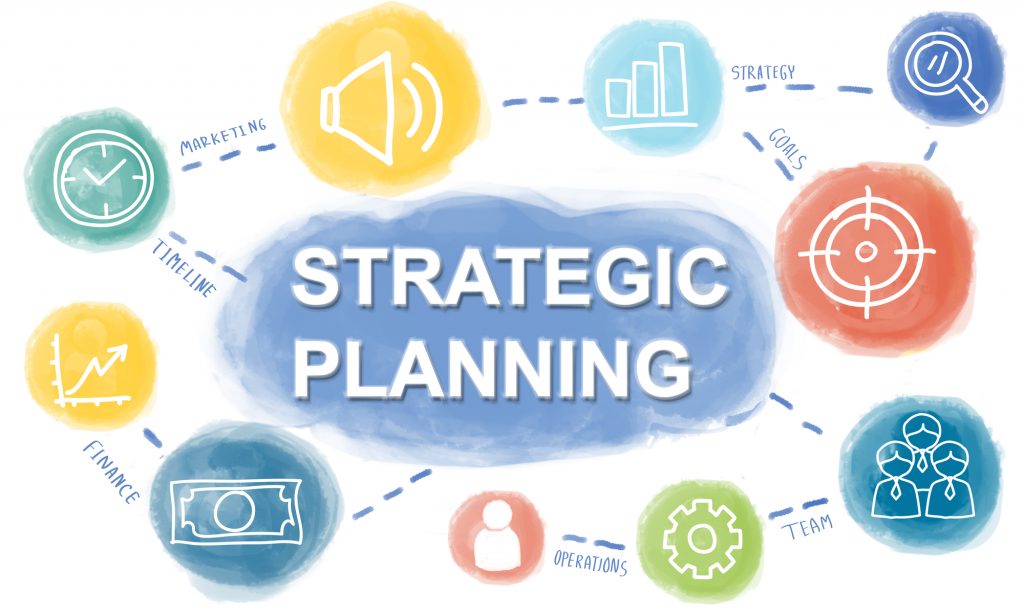 Is the economy getting better or are we in for some serious problems? You can watch trends and listen to economists, but these aren’t all the answers you need.
Is the economy getting better or are we in for some serious problems? You can watch trends and listen to economists, but these aren’t all the answers you need.
If the coronavirus pandemic has taught us anything, you can’t anticipate a black swan event (an unpredicted rare event beyond what’s normally expected and which can have serious consequences).
The only way to be sure you can handle whatever comes your way and move toward your long-term goals is to make a strategic plan.
Strategic plan versus basic business plan
Is a strategic plan any different from a plain vanilla business plan? Both are intended to help you understand where your business stands now, set goals for the future, and describe actions to help you get where you want to be. And both require continual review and updating as things change.
But I suggest that a strategic plan is more thoughtful, taking into account the “what if’s” that the usual plan does not. Football coach Vince Lombardi said: “Hope is not a strategy.” You need to make plans so you can implement them.
Planning for good times and bad times
Because you never know the direction in which the economy, and your business, will go, you have to think ahead and be prepared for whatever happens. With Super Bowl LIV a recent memory, how will you go on the offense? How will you go on the defense? It’s advisable to create a strategic plan to map out what actions you’d take in whatever economic environment you operate.
Plans for the good times
When the economy is good, and your business is thriving, it’s a great time to go on the offensive. Plan now for what you’d do as your business grows.
Increased revenues. As revenue increases, be sure to make sure that profits keep pace. Rising prices for the goods you buy as well as your payroll can too easily minimize or even reduce your profits despite more money coming in the door.
Assuming you have more money available to you, plan what you’d do with it. You might want to pay down debt, expand to a new location, or take on new projects.
Staffing. As your business grows, you need to decide whether your current staff is large enough to handle the growth and maintain your quality of customer service. This could mean hiring new employees, so factor in the added cost of their wages, benefits, and related employment taxes.
You may also want to increase compensation to employees. This could be through higher wages, bonuses, or added fringe benefits. Keep in mind that adding fringe benefits may cost you less than higher wages because most fringe benefits are exempt from employment taxes.
Marketing. To maintain your growth, consider expanding your marketing activities. This is especially easy if you have more money coming in than you had originally expected. Revisit your marketing budget for upcoming quarters.
Plans for the bad times
If the economy turns sour or your business experiences prolonged hard times, how will you get through? Planning ahead can go a long way in easing your concerns and ensuring the financial wherewithal to avoid going under.
Cash flow. If revenue coming in isn’t going to be sufficient to cover your bills, including payroll, what can you do? It’s always a good idea to have a financial backstop in place (a rainy day fund you create or a line of credit you put in place in the good times).
It’s also vital to continually monitor expenses so they don’t get out of hand. As part of a strategic plan, make it a regular activity to review expenses. For example, don’t simply renew an annual insurance policy or subscriptions. Decide what’s needed and look for ways to save money.
Maintaining your staff. The last thing any business owner wants to do is lay off good employees. It’s traumatic for you and the employee (and the employee’s family). Again, a financial backstop is a short-term solution, but you need to find ways to keep employees busy when business is slow. Use the time for training to improve skills or retraining for new positions.
Marketing strategies. There’s a tendency in tough times to cut the marketing budget to save money. But tough times are when marketing is needed more than ever. Think ahead to low-cost marketing strategies you can use, such as social media campaigns (re-train an employee to work this for you?).
Resource
The SBA has an extensive article on strategic planning (to help you get started). It also lists some reasons why strategic plans fail. Take note of what they are so you won’t make the same mistakes:
- Strategy was defined incorrectly.
- The plans lacked detailed implementation steps with tasks, schedules and responsibilities.
- Goals were not stated in clear and quantifiable terms.
- Planning did not involve input of key people.
Conclusion
Last month’s blog focused on how to stay alert to economic changes. Next month’s blog on preparing for economic changes will focus on handling debt.


